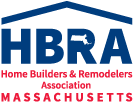By Guy Webb, HBRAMA’s “Code Guy”
As of January 1st of this year, there is an Updated Stretch Energy Code in effect, much to the surprise of many builders, remodelers and even building officials. The Stretch Energy Code is a product of the Green Communities Act of which includes 300 cities and towns (out of 351) in Massachusetts. The remaining municipalities, mostly smaller towns use the 9th Edition Base Energy Code but only until the 10th Edition is launched sometime later this year. Once the 10th Edition is in effect those puny muni’s will have an updated Base Energy Code. Also, once the 10th Edition is in effect, ALL municipalities will have a brand-new Building Code, too. But wait, THERE’S MORE! Cities and Towns also now have a “Specialized Code” that they can opt into which will supersede whichever Energy Code is currently in place for their municipality. Some of those communities will have that code in place on July 1, 2023 – just a handful of months away.
Confused? You should be – the lack of uniformity as well as the hodge-podge of effective dates (many still TBD) and the sheer number of different codes, especially energy codes, can only cause confusion and chaos. But I’ll try to clarify where we are and where we’re headed in the near future regarding our building and energy codes.
WAIT…ENERGY CODES? Plural? How Many are there?
Three! Because when one wasn’t enough, Massachusetts created the Green Communities Act which added the Stretch Energy Code in 2009. That has since been deemed insufficient, so we now have a third energy code titled the Massachusetts Municipal Opt-in Specialized Stretch Code. I think the homebuilding industry is starting to feel like we’re being punished for something. Honestly, I’m waiting for Dean Vernon Wormer (of Animal House fame) to show up at a BBRS meeting and inform us that we are now on a “Double Secret Energy Code”. As that hasn’t happened…yet, let’s take a quick look at the three Energy Codes that are currently out there.
Updated Stretch Energy Code – Effective as of January 1, 2023
As already noted, the Updated Stretch Energy Code is already in place in 300 cities and towns, with more in the pipeline. The code is based on the 2021 International Energy Conservation Code (IECC) with many MA Amendments. This updated code is significantly different than the preceding version of the Stretch Code. It includes some big (i.e., costly) changes, such as:
Increased R-Values – The thermal envelope just got enhanced. You’ll need to have R-30 walls (not a typo!) and R-60 Ceiling/Attics (also not a typo).
New mechanical ventilation requirements – that mandate the installation of an Energy Recovery Ventilator (ERV) or Heat Recovery Ventilator (HRV). No more using a bath fan to satisfy ventilation requirements
Lower HERS Score targets (previously 55). They remain at 55 if the building is “All-Electric”, and 52 if using fossil fuels. However, these scores drop even lower starting on July 1, 2024. 45 for All-Electric homes and 42 if using fossil fuels.
EV-Ready Requirements – At least one 50-amp branch circuit per dwelling unit to provide for AC Level II charging. The circuit shall terminate in a NEMA receptacle or a Society of Automotive Engineers (SAE) Standard SAE J1772 electrical connector for EVSE servicing Electric Vehicles, located within 6 feet of each EV ready space.
Larger Additions – Additions over 1,000 sq. ft. will need to meet a HERS score of 52 (mixed-fuel) or 55 (all-electric). I haven’t figured out how to run a blower door test on an addition that’s wide open to the existing structure, but apparently it must be done.
Alterations – Alterations that exceed 50% of the existing home square footage or 50% or more of the value of the existing home will need to meet a HERS score of 52 (mixed-fuel) or 55 (all-electric). That’s for the entire dwelling, folks. A renovation that crosses either of the above thresholds will result in a whole-house renovation. Or a homeowner who says, “never mind”.
The effective date on January 1, 2023 for the Updated Stretch Energy Code did not include a period of concurrency (where the existing and new code are simultaneously in effect), which is why so many people were caught off-guard. That all-important concurrency period is when we all get trained up on the new code.
Municipal Opt-in Specialized Stretch Code – Effective dates vary
Cities and Towns may opt-in to the “Specialized Code” which is the same as the Stretch Energy Code above but with some additional MA Amendments on top of the MA Amendments that are on top of the 2021 IECC to make up the Stretch Energy Code. Yep, amendments plus more amendments. The more significant provisions are:
- Mixed-Fuel homes will require solar on the roof, where feasible. Hint: It’s almost always “feasible”.
- Mixed-Fuel homes will also be required to pre-wire the building to be all-electric, ostensibly to encourage future homeowners to replace all their gas-fired junk with new, nifty all-electric stuff.
- Homes over 4,000 sq. ft. cannot use fossil fuels, at all. Not even a gas fireplace.
Currently there are four cities that have opted in. Brookline, Cambridge, Somerville and Watertown, all with effective dates of July 1, 2023. I expect many towns will opt in through their town meetings this spring. These towns will likely set an effective date of January 1, 2024, but can may select any date they wish. The time gap between when the municipality approves the adoption of the Specialized Code, and its effective date is considered the concurrency period.
Base Energy Code – Currently in effect (but will be replaced with the 10th Edition)
This is the least used of the three Energy Codes and is gradually disappearing as more towns become Green Communities. As noted above, there are only 50 municipalities out of 351 in the Commonwealth that are not already Green Communities with several more in the pipeline.
At the moment, the 9th Edition is the effective Base Energy Code which is based on the 2015 IECC (with, Ahem…MA Amendments). The 10th Edition will be based on the 2021 IECC and includes some of, but not all, of the requirements of the Updated Stretch Energy Code, most notably the higher R-Values in walls and ceilings.
That’s it for the Energy Codes, so let’s move on to the new Building Code.
YOU MEAN IT GETS WORSE?
Well, yes…a bit. To add to this cluster, the current 9th Edition Building Code is soon to be replaced with the 10th Edition Building Code in just a matter of months. That means a new 1 & 2 Family Building Code, based on the 2021 International Residential Code (IRC) with, you guessed it, MA Amendments. Really, the Commonwealth should change the state motto to: Emendamus Omnia (We Amend Everything).
10th Edition Code – Effective date soon(ish)
The 10th Edition has been drafted by the Board of Building Regulations & Standards (BBRS) and sent along the often lengthy and clear-as-mud administrative review phase. There will eventually be a public hearing, and an official effective date will be set, likely with a 6-month concurrency period. When might that be, you ask? I wish you hadn’t asked, because not only do I not know; nobody does. But my best guess is that the effective date won’t be earlier than July 1, 2023 and not later than January 1, 2024. The “good” news is that while there are plenty of changes from the 9th to 10th Edition, there aren’t any BIG changes such as when earlier editions introduced new and confusing wall bracing requirements, or when they surprised us with a new wind-borne debris section that required safety glass in most new homes near the coasts of Massachusetts.
I should also note that we once again helped defeat the proposal to include fire sprinklers in new 1 & 2 family homes. I think it’s good to end on a high note, so that’s it for now, other than to say, I will keep you all in my prayers as you navigate the irregularly timed tsunami of new codes. Oh, and of course we at the HBRAMA will keep you informed of any developments as these codes all play out, and keep you informed of upcoming education/training on the new codes, particularly the Energy Codes.
Guy Webb is the former Executive Officer of the Central MA Home Builders Association and is currently retained by HBRAMA to monitor the code process in in the state. He is available to aid members in code interpretations.

